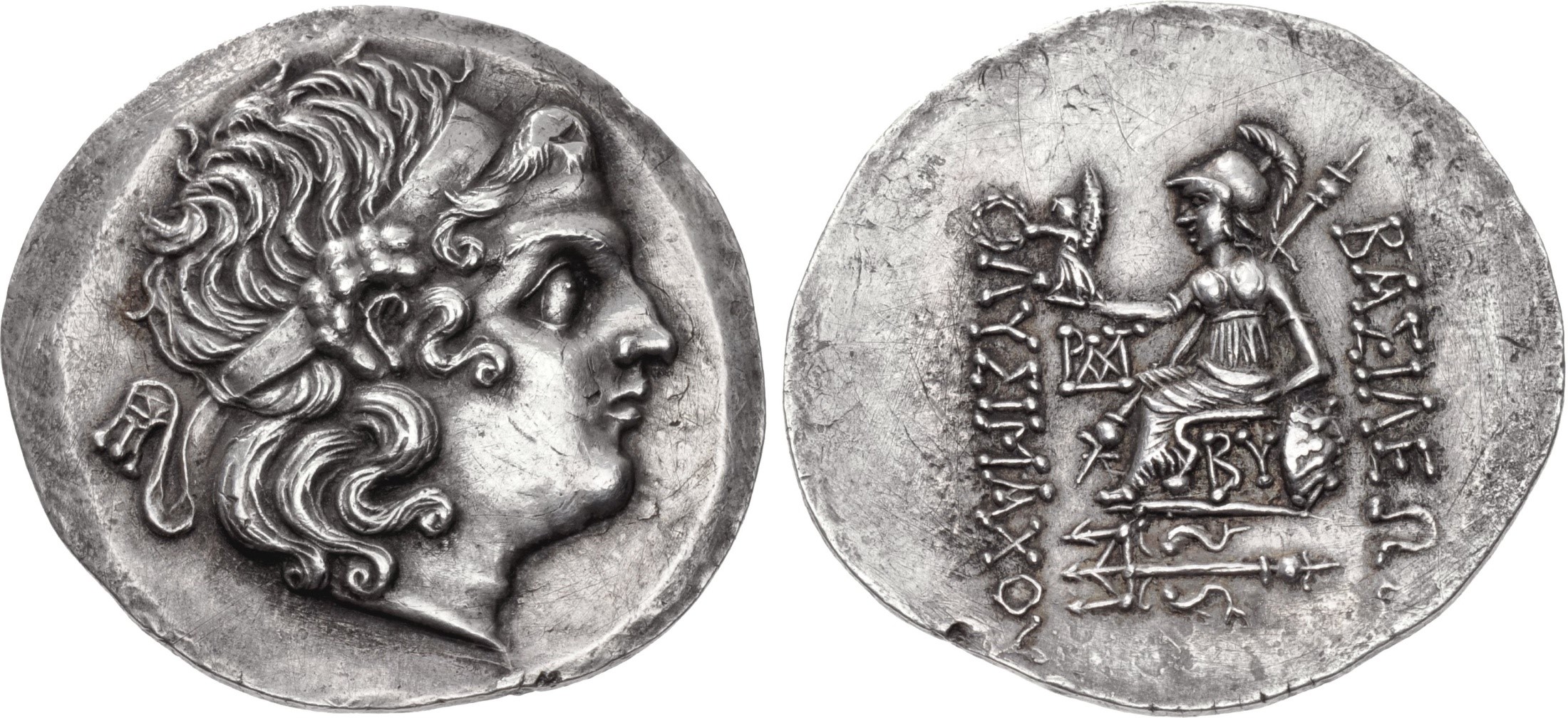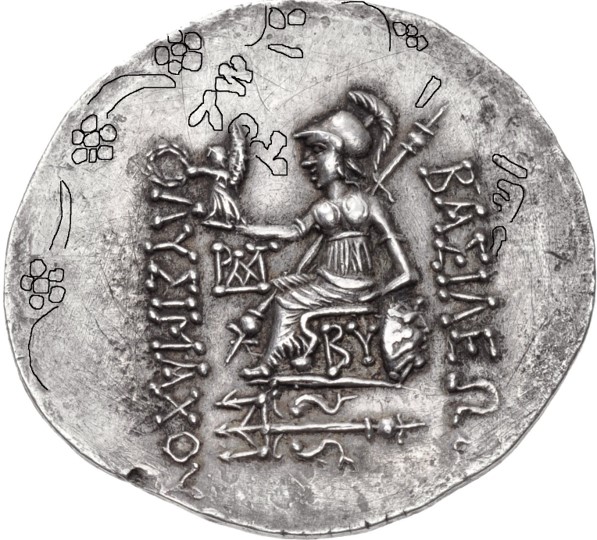85 BCE - 70 BCE | ΒΑΣΙΛΕΩΣ ΛYΣΙΜΑΧΟY
Overstriking coin
Byzantium on Mithridates Eupator - Classical Numismatic Group, 93, 22 May 2013, 101.jpg
Overstruck variety
Byzantium on Mithridates Eupator - Classical Numismatic Group, 93, 22 May 2013, 101 overstruck variety.jpg

Byzantium on Mithridates (drawing) 2340.jpg
|
|
Sale(s)Sale(s) ᵖ:
|
Classical Numismatic Group, 93, 22 May 2013, 101
|
|
|
|
Description
| ObverseInscription or printing placed on the obverse.:
|
Diademed head of the deified Alexander right, with horn of Ammon
|
ReverseInscription or printing placed on the reverse.:
|
ΒΑΣΙΛΕΩΣ ΛYΣΙΜΑΧΟY (Greek) Athena Nikephoros seated left, left arm resting on shield, transverse spear in background, monogram to inner left, BY below throne, ornate trident in exergue
|
Mint and issuing power
Chronology
| FromIdentifies the initial date in a range assigned in a numismatic context. 85 BCE toIdentifies the final date in a range assigned in a numismatic context.. 70 BCE
|
Hellenistic 323-30 BC  periodTime period of the numismatic object. periodTime period of the numismatic object.
|
Physical description
MetalThe physical material (usually metal) from which an object is made.: Silver 
|
WeightWeight of the numismatic object (in grams). in grams: 16.2616.26 g <br />16,260 mg <br />
|
DenominationTerm indicating the value of a numismatic object. Examples: tetradrachm, chalkous, denarius.: tetradrachm 
|
AxisDescribes the directional relationship between the obverse and reverse of a numismatic object.: 1212 mm <br />1.2 cm <br />
|
| DiameterDescribes diameter of an object (in mm).: 3636 mm <br />3.6 cm <br />
|
StandardStandard.: Attic
|
References
Description
| ObverseInscription or printing placed on the obverse.:
|
Diademed head right
|
ReverseInscription or printing placed on the reverse.:
|
BAΣIΛEΩΣ MIΘPAΔATOY EYΠATOPOΣ (Greek) Stag grazing left, to left, star-in-crescent above monogram, to right, (date) above monogram, (month) in exergue, all within Dionysiac wreath of ivy and fruit
|
Mint and issuing power
Chronology
| FromIdentifies the initial date in a range assigned in a numismatic context. 96 BCE toIdentifies the final date in a range assigned in a numismatic context.. 80 BCE
|
Hellenistic 323-30 BC  periodTime period of the numismatic object. periodTime period of the numismatic object.
|
Physical description
| DenominationTerm indicating the value of a numismatic object. Examples: tetradrachm, chalkous, denarius. ᵖ:
|
tetradrachm 
|
StandardStandard. ᵖ:
|
Attic
|
References
References
- a b Callataÿ, François de (1997), L'histoire des guerres mithridatiques vue par les monnaies, Numismatica Lovaniensia 18, Louvain-la-Neuve, XIII + 481 p. et 54 pl.
- ^ Callataÿ, François de (2013), “Byzantion over Mithradates Eupator. How the Pontic king paid his Thracian mercenaries after the treaty of Dardanos”, Notae Numismaticae (Krakow), 8, p. 95-104.
- ^ Callataÿ, François de (2021), “On pattern and purpose of overstrikes of late Hellenistic tetradrachms in Thrace Macedonia”, in Ulrike Peter and Bernhard Weisser (eds.), Thrace. Local coinage and regional identity, Berlin Studies of the Ancient World 77, Berlin, Topoi, p. 263-289.


